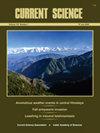南印度allodapine蜜蜂Braunsapis picitarsis (Cameron)的筑巢生物学
IF 1
4区 综合性期刊
Q3 MULTIDISCIPLINARY SCIENCES
引用次数: 0
摘要
异花蝶蜂,Braunsapis picitarsis (Cameron)(异花蝶纲:木蝇科:蜜蜂科)是一种聚电性蜜蜂,是许多农业和园艺作物的重要传粉者。由于picitarsis被发现与其他物种有隐隐性,因此进行了DNA条形码鉴定以确认物种身份。2019 - 2021年共收集到孔雀花树(Caesalpinia pulcherrima, L.)干枝上的巢巢83个。蜂群偏好入口直径2.830.06 mm,巢长5.380.30 cm的巢址。实验室总发育期为56.850.84 d。蛹在发育过程中表现出眼睛颜色和身体色素的差异。DNA片段重叠群。利用MEGA 7软件分析所开发的基因组是否存在停止密码子。使用NCBI的核苷酸BLASTn对研究产生的序列进行序列同源性分析,并提交BankIt, GenBank生成登录号。物种的详细资料已上载至生命条码数据系统(BOLD系统v4)以生成条码。本文章由计算机程序翻译,如有差异,请以英文原文为准。
Nesting biology of allodapine bee Braunsapis picitarsis (Cameron) from South India
The Allodapine bee, Braunsapis picitarsis (Cameron) (Allodapini: Xylocopinae: Apidae) is polylectic and found to be an important pollinator for many agricultural and horticultural crops. As B. picitarsis was found to be cryptic to other species, the DNA barcoding was done to confirm the species identity. Their nesting sites were located at dried twigs of peacock flower tree, Caesalpinia pulcherrima (L.), and a total of 83 nests were collected from 2019 to 2021. The bees preferred nesting sites with an entrance diameter of 2.83 0.06 mm with a nest length of 5.38 0.30 cm. The total development period was 56.85 0.84 days in the laboratory. Pupa exhibited difference in eye colour and body pigmentation during their development. DNA contigs. The contigs developed were analysed for the presence of stop codons using the software MEGA 7. The sequences generated from the study was analyzed for sequence homology using nucleotide BLASTn at NCBI and submitted to BankIt, GenBank for the generation of accession number. Details of the species were uploaded at Barcode of Life Data Systems (BOLD systems v4) to generate the barcodes.
求助全文
通过发布文献求助,成功后即可免费获取论文全文。
去求助
来源期刊

Current Science
综合性期刊-综合性期刊
CiteScore
1.50
自引率
10.00%
发文量
97
审稿时长
3 months
期刊介绍:
Current Science, published every fortnight by the Association, in collaboration with the Indian Academy of Sciences, is the leading interdisciplinary science journal from India. It was started in 1932 by the then stalwarts of Indian science such as CV Raman, Birbal Sahni, Meghnad Saha, Martin Foster and S.S. Bhatnagar. In 2011, the journal completed one hundred volumes. The journal is intended as a medium for communication and discussion of important issues that concern science and scientific activities. Besides full length research articles and shorter research communications, the journal publishes review articles, scientific correspondence and commentaries, news and views, comments on recently published research papers, opinions on scientific activity, articles on universities, Indian laboratories and institutions, interviews with scientists, personal information, book reviews, etc. It is also a forum to discuss issues and problems faced by science and scientists and an effective medium of interaction among scientists in the country and abroad. Current Science is read by a large community of scientists and the circulation has been continuously going up.
Current Science publishes special sections on diverse and topical themes of interest and this has served as a platform for the scientific fraternity to get their work acknowledged and highlighted. Some of the special sections that have been well received in the recent past include remote sensing, waves and symmetry, seismology in India, nanomaterials, AIDS, Alzheimer''s disease, molecular biology of ageing, cancer, cardiovascular diseases, Indian monsoon, water, transport, and mountain weather forecasting in India, to name a few. Contributions to these special issues ‘which receive widespread attention’ are from leading scientists in India and abroad.
 求助内容:
求助内容: 应助结果提醒方式:
应助结果提醒方式:


